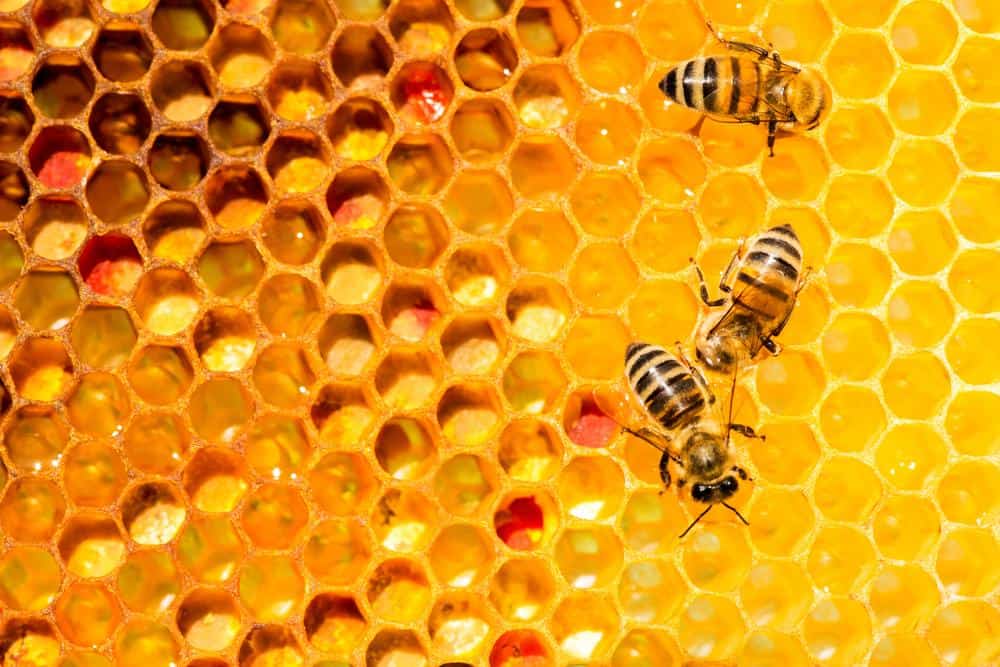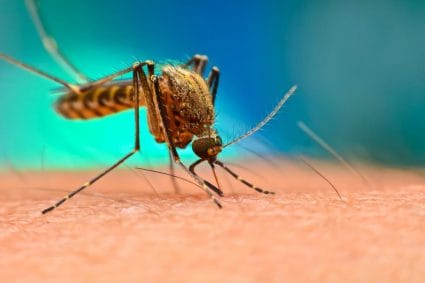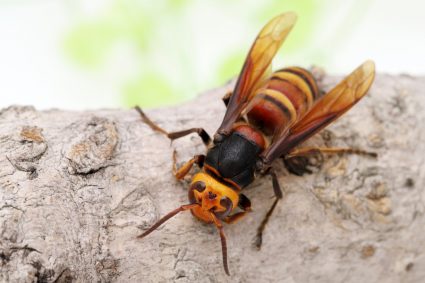
Carpenter bees, a species in the genus Xylocopa, are known for their nesting behavior where they burrow into hard plant materials like dead wood or bamboo. While they are important pollinators, their nesting activities can cause extensive damage to wooden structures, including homes, and threaten their integrity. This has led to numerous homeowners seeking solutions to get rid of these bees. One common question is whether bleach can kill carpenter bees. Here we answer this question in detail.
Does Bleach Kill Carpenter Bees?
Contrary to popular belief, bleach is not an effective solution for killing carpenter bees. While it is classified as a pesticide, bleach is not an insecticide and won’t kill bees unless they are submerged in it. This method is not only impractical but also poses potential risks and dangers.
Bees might drown in bleach, but this is not exclusive to bleach; bees will die if you submerge them in any liquid. In fact, bees are actually attracted to bleach water, which can exacerbate your bee problem rather than solve it.
Moreover, using bleach may harm beneficial insects and pollinators, which can negatively impact the ecosystem. Carpenter bees are important pollinators, and their contribution to pollination far outweighs any damage they may cause to wooden structures.
Risks of Using Bleach
Using bleach to kill carpenter bees can pose several risks. First, bleach can release harmful chemicals, especially when mixed with other products. Second, using bleach in an untrained manner can pose a greater risk to your health and safety than carpenter bees ever will be.
Given these risks, it is advisable to consider alternative methods to get rid of carpenter bees.
Alternative Methods to Control Carpenter Bees
There are several alternative methods to kill or control carpenter bees without using bleach. These include:
- Insecticidal dust: Apply this directly into the carpenter bee holes to kill the existing bees and prevent further growth of the bee population.
- Boric acid: Mix 3 parts water with 1 part boric acid in a spray bottle and spray inside the entrance hole. This is poisonous to carpenter bees and will exterminate them within an hour.
- Aerosol carburetor cleaner: Spray it inside the nest, and it will either kill the bees or make their nest inhabitable.
- Citrus water: Boil sliced citrus fruit in water for 10-15 minutes, let it cool down, and pour it into a spray bottle with a “stream” nozzle. Spray it into the nest site, as carpenter bees are naturally repelled by the smell of citrus.
- Preventive measures: Apply paint, stain, or almond oil to wood surfaces to deter carpenter bees from constructing new nests.
Conclusion
While it might be tempting to use bleach as a quick fix to your carpenter bee problem, it’s essential to understand that bleach is not an effective solution for getting rid of these bees. Instead, consider using safer and more effective methods such as insecticidal dust, boric acid, or aerosol carburetor cleaner. Always remember that carpenter bees are important pollinators, so it’s best to use non-toxic and environmentally friendly methods to control them whenever possible. If the infestation is severe and poses a threat to your property, consider hiring a professional pest control service to handle the situation safely and effectively.
Frequently Asked Questions
What time of year are carpenter bees most active?
Carpenter bees are most active during the warmer months of spring and summer. This is when they emerge from their nests to mate and feed on nectar.
Can carpenter bees sting?
Only female carpenter bees have the ability to sting. However, they are generally not aggressive and will only sting if they feel directly threatened or provoked.
Are carpenter bees the same as bumblebees?
While carpenter bees and bumblebees may look similar, they are not the same. Carpenter bees have a shiny, hairless abdomen, while bumblebees have a hairy abdomen with black and yellow stripes.
What attracts carpenter bees to my home?
Carpenter bees are attracted to untreated, unpainted wood. They prefer softwoods such as cedar, pine, fir, and redwood for nesting.
How can I identify a carpenter bee nest?
Carpenter bee nests are typically found in wood and can be identified by the presence of a round, half-inch hole. You may also notice a sawdust-like material, known as frass, near the hole, which is a by-product of their nesting activities.
Can carpenter bees damage the structural integrity of my home?
While carpenter bees do not eat wood, they burrow into it to build their nests, which can cause cosmetic damage. However, if the infestation is large and the same areas are infested year after year, it could potentially lead to structural damage.












